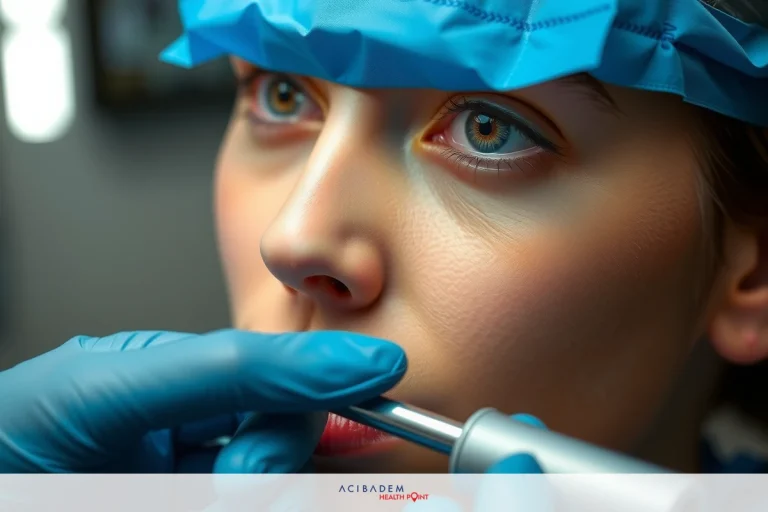Is Septoplasty the Same as Rhinoplasty
Is Septoplasty the Same as Rhinoplasty Septoplasty and rhinoplasty are two medical interventions often performed on the nose. Each has a unique purpose and method of operation that distinguishes it from the other. Septoplasty is primarily used to correct a deviated septum, enhancing airway function and improving nasal breathing. It’s generally regarded as a functional surgery because its main goal is to improve the person’s health condition.
On the contrary, rhinoplasty is frequently associated with aesthetic improvements to the nose. Its primary focus is on modifying the shape and appearance of one’s nose for cosmetic purposes. Although rhinoplasty can also serve functional purposes, such as rectifying breathing problems, it’s most commonly associated with enhancing facial symmetry and attractiveness.
What is Septoplasty?
Septoplasty is a type of nose surgery primarily performed to rectify a condition known as a deviated septum. The nasal septum is the thin wall separating your right and left nostrils. Ideally, the septum should run down the center of your nose. However, it can be displaced to one side in some people, leading to a deviated septum. A slight deviation doesn’t cause significant issues, but a severe one can cause problems with nasal breathing and lead to snoring or sleep apnea.
This surgical procedure involves adjusting or eliminating parts of the septum that are not correctly aligned to improve airflow through the nose. The goal of septoplasty is not cosmetic enhancement; rather, it’s aimed at improving nasal function. It’s often done to treat symptoms such as frequent nosebleeds, facial pain, recurring sinus infections, and difficulty breathing through the nose due to obstructions.
The operation itself is usually performed under local or general anesthesia and typically takes about 60 to 90 minutes. The surgeon works through the nostrils, making an incision in the lining of the septum to reach the cartilage targeted for correction. Patients often notice an improvement in their breathing and overall quality of life following recovery from this surgery.
Septoplasty differs from rhinoplasty in its primary goals and procedures. While both are surgeries involving the nose, septoplasty focuses on improving function related to a deviated septum and enhancing nasal breathing. In contrast, rhinoplasty often aims at reshaping the nose for aesthetic purposes. Despite their differences, these procedures can be performed together if a patient has both functional and cosmetic concerns about their nose.
What is Rhinoplasty?
Rhinoplasty is a surgical procedure with the primary objective of reshaping the nose for aesthetic purposes. This cosmetic procedure can modify the nose’s size, shape, or proportions to achieve a desired look that harmonizes with other facial features. Unlike septoplasty, which focuses on resolving functional issues such as breathing difficulties, rhinoplasty is typically performed for cosmetic reasons. However, it can also simultaneously address functional problems when necessary.
The process involves a plastic surgeon making incisions to access the bones and cartilage that support the nose. These structures are then sculpted to the preferred shape. The skin is redraped over the new frame, and a splint is placed outside the nose to support the new shape as it heals. Rhinoplasty can significantly enhance a person’s confidence by improving their facial symmetry and eliminating insecurities related to their nasal appearance.
While both rhinoplasty and septoplasty involve surgeries on the nose, the key difference lies in their purpose. Rhinoplasty prioritizes aesthetic enhancement, while septoplasty aims at rectifying functional issues associated with a deviated septum and improving nasal breathing. It’s important to note that these two procedures can be

combined into one operation, commonly referred to as septorhinoplasty. In this combined procedure, both functional and cosmetic concerns are addressed simultaneously, providing patients with both an improved ability to breathe and an enhanced appearance of their nose.
Key Differences Between Septoplasty and Rhinoplasty
While septoplasty and rhinoplasty are both surgical procedures that address the nose, they serve distinct purposes and involve different techniques. The primary aim of septoplasty is to correct a deviated septum and improve nasal breathing, focusing more on functional improvement rather than aesthetics. In contrast, rhinoplasty is typically performed for cosmetic purposes, reshaping the nose to improve its appearance. However, it can also rectify functional issues if needed. Here’s a closer look at the key differences between these two nose surgeries:
- Purpose: Septoplasty is performed to correct a deviated septum and resolve related symptoms like nasal obstruction, recurring sinus infections, or frequent nosebleeds. Rhinoplasty, on the other hand, primarily serves to enhance the nose’s aesthetic appearance.
- Techniques: In septoplasty, the surgeon makes an incision inside the nostrils to reach and correct the deviated septum without altering the nose’s outer appearance. In rhinoplasty, incisions are made to access the underlying bone and cartilage, which are then sculpted into a desired shape.
- Outcomes: After septoplasty, patients usually experience improved nasal breathing and reduced symptoms associated with a deviated septum. Rhinoplasty results in changes to the shape, size or proportions of the nose for aesthetic enhancement.
- Recovery Time: Recovery times can vary based on individual factors but generally, septoplasty has a quicker recovery period compared to rhinoplasty due to its less invasive nature.
- Insurance Coverage: Septoplasty is often considered medically necessary and may be covered by insurance while rhinoplasty for purely cosmetic reasons is typically not covered.
Understanding these differences can help individuals make informed decisions about which procedure might be best suited to their needs and expectations.
Frequently Asked Questions
Is septoplasty the same as rhinoplasty?
No, septoplasty and rhinoplasty are two different procedures. Septoplasty focuses on correcting a deviated septum to improve nasal breathing, while rhinoplasty is a cosmetic surgery aimed at reshaping the nose for aesthetic purposes.
Can I undergo both septoplasty and rhinoplasty at the same time?
Yes, it is possible to combine both procedures into one operation known as septorhinoplasty. This allows for addressing functional issues related to a deviated septum while also achieving desired cosmetic changes to the nose.
What are the risks associated with septoplasty and rhinoplasty?
As with any surgical procedure, there are risks involved. These can include bleeding, infection, adverse reactions to anesthesia, scarring, asymmetry, or dissatisfaction with the results. However, complications are relatively rare and can be minimized by choosing a skilled surgeon and following post-operative care instructions.
How long is the recovery period for septoplasty and rhinoplasty?
The recovery time can vary depending on the individual and the extent of the surgery. Generally, patients can expect a shorter recovery period for septoplasty compared to rhinoplasty. Full recovery typically takes several weeks to months, during which swelling and bruising gradually subside.
Will there be visible scarring after septoplasty or rhinoplasty?
In most cases, incisions made for these procedures are hidden inside the nostrils or in inconspicuous areas. This helps minimize visible scarring. However, every individual's healing process is unique, and scarring can vary. It's important to discuss any concerns about scarring with your surgeon before undergoing the procedure. These frequently asked questions aim to address common queries related to septoplasty and rhinoplasty. If you have any specific concerns or additional questions, it's best to consult with a qualified medical professional who can provide personalized advice based on your unique situation.











